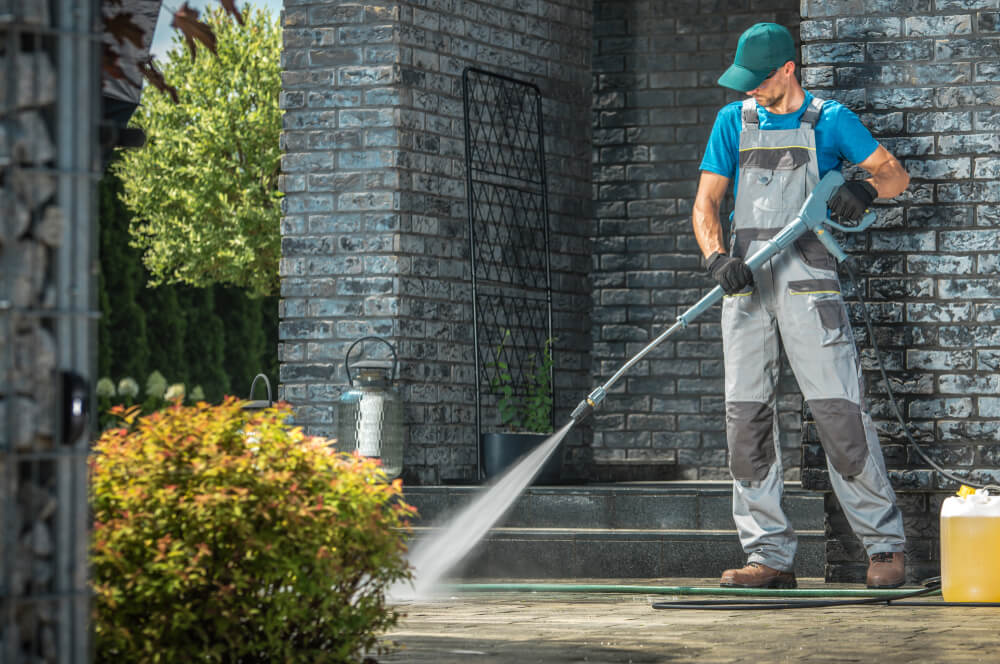Picture this: it’s a beautiful sunny day, and you’re looking at your driveway covered in dirt, grime, and various stains. The thought of spending hours scrubbing away seems daunting, but fear not! Enter the ultimate solution to all your cleaning woes: pressure washing. Power washing, also known as pressure washing, is a fantastic method to make your outdoor surfaces shine like new again. In this guide, we’ll delve into the world of pressure washing, sharing with you invaluable tips, clever tricks, and essential safety precautions to ensure a perfect cleaning experience. So why break a sweat when you can let the power of water do all the work for you? Join us as we embark on this journey to unleash the true potential of pressure washing!
Essential Equipment for Pressure Washing
Pressure washing requires specific equipment to ensure effective and efficient cleaning. Here are the essential items you’ll need:
Pressure Washer: The cornerstone of pressure washing is, of course, the pressure washer itself. This powerful machine uses high-pressure water spray to remove dirt, grime, mold, and other stubborn stains from various surfaces. It typically consists of a motor, pump, high-pressure hose, and a nozzle that controls the water spray pattern.

Nozzles: Nozzles are important attachments that determine the intensity and angle of the water spray. Different types of nozzles produce varying pressures and spray patterns, allowing you to adapt to different surfaces and cleaning needs. From wide-spray nozzles for delicate surfaces to narrow-spray nozzles for intense cleaning, having a range of nozzles is essential for achieving the desired results.
Safety Gear: Safety should always be a top priority when pressure washing. Make sure to wear appropriate safety gear to protect yourself from potential hazards. Safety goggles or glasses shield your eyes from the strong water spray and any debris that may be dispersed during the cleaning process. A pair of gloves will help protect your hands from any chemicals or abrasives used in conjunction with pressure washing.
Remember, having the right equipment is crucial for ensuring the success and safety of your pressure washing endeavors.
Best Practices for Effective Pressure Washing
Correct Nozzle Selection: Choosing the right nozzle for your pressure washer is crucial to achieve optimal results. Different nozzles provide different spray angles and pressures, allowing you to effectively clean various surfaces. Use a wide-angle nozzle for lighter tasks like cleaning windows or delicate surfaces, while a narrow-angle nozzle is more suited for tougher jobs like removing stubborn stains or dirt from concrete.
Proper Technique: To maximize the cleaning power of your pressure washer, it’s important to maintain a consistent and even distance between the nozzle and the surface being cleaned. Start by standing a few feet away and gradually move closer until you find the optimal distance for effective cleaning. It’s also recommended to move the nozzle in a sweeping motion rather than directing it straight at the surface, which helps to prevent streaks or damage.
Precautions for Delicate Surfaces: When pressure washing surfaces that are more prone to damage, such as painted walls or wooden decks, take extra precautions. Lower the pressure setting on your pressure washer to a gentler level or opt for a wider spray angle nozzle to minimize the risk of causing any harm. Always test a small, inconspicuous area first to ensure that the surface can withstand the pressure without any adverse effects.
Power washing
Remember, pressure washing can be a powerful cleaning tool, but it also requires responsible usage to avoid unintended damage or injury. By following these best practices, you can ensure effective cleaning while maintaining the safety and integrity of the surfaces you are working on.
Safety Precautions for Pressure Washing
When it comes to pressure washing, safety should always be a top priority. Follow these precautions to ensure a safe and smooth cleaning experience.
Wear Protective Gear:
Before starting the pressure washing process, make sure you are dressed appropriately. Wear safety goggles to protect your eyes from any debris or water spray. Additionally, it is essential to wear sturdy, non-slip footwear to prevent accidents that could result from slippery surfaces.Read the Instruction Manual:
Every pressure washer is unique, so it is crucial to read and familiarize yourself with the user manual before operating the machine. Understanding how to properly operate the pressure washer will help prevent any mishaps or damage.Keep a Safe Distance:
Maintain a safe distance between yourself, the pressure washer, and any objects or surfaces being cleaned. Standing too close to the surface being washed can cause injury from flying debris, splashing water, or the force of the water spray. It is recommended to start pressure washing from a safe distance and gradually move closer to achieve the desired results.
Remember, safety precautions are essential during pressure washing to protect both yourself and the surfaces you are cleaning. By taking the necessary steps to ensure a safe environment, you can confidently power wash with ease and efficiency.



